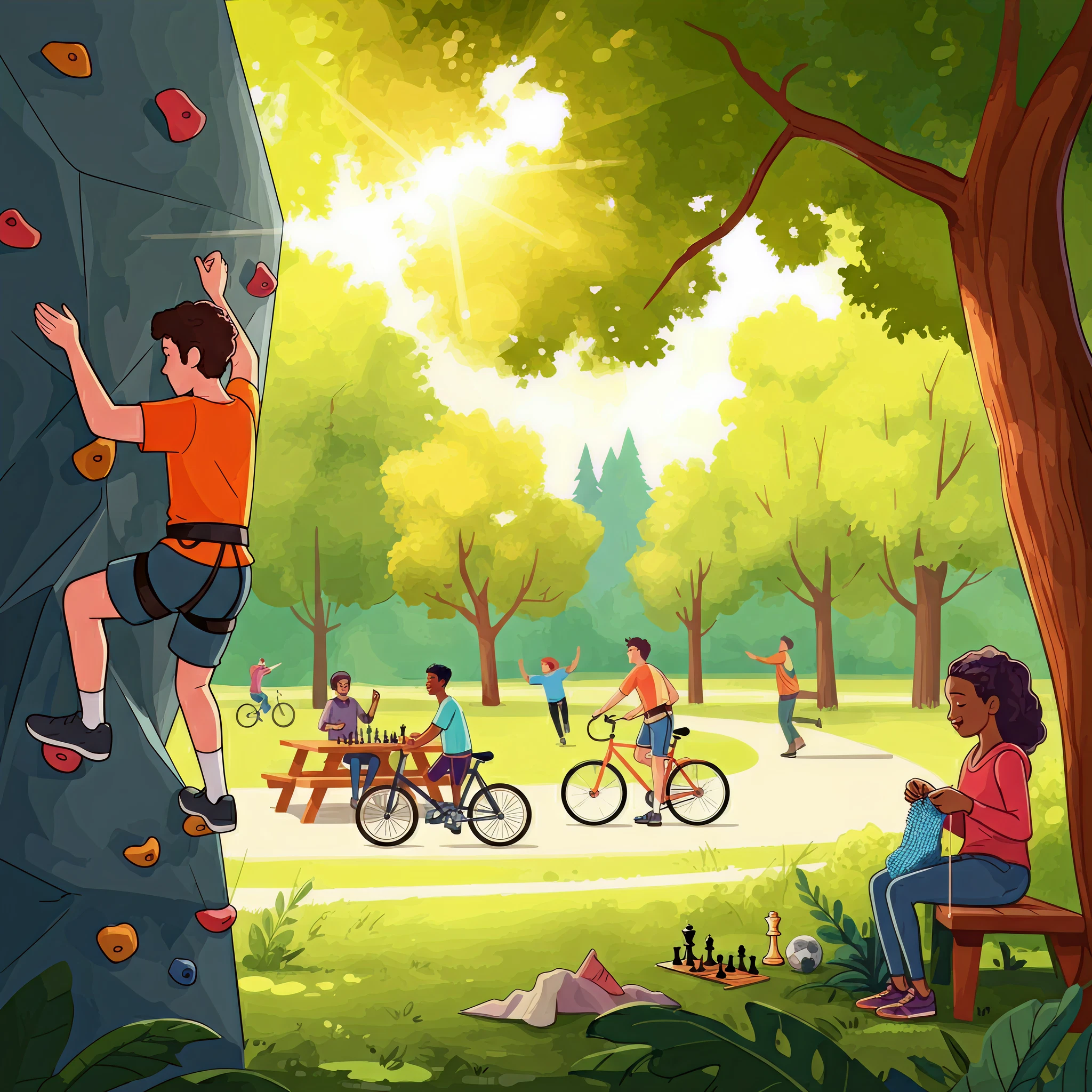While the terms leisure and recreation are often used interchangeably, they have distinct meanings and roles in our lives. Both are essential for maintaining balance, reducing stress, and improving overall well-being, but understanding what makes them different can help you make the most of your free time.
This article dives into the key distinctions between leisure and recreation, their unique benefits, and how they complement each other to enrich our lives.
What Is Leisure?
At its core, leisure refers to free time when you’re not working, managing responsibilities, or engaging in obligatory tasks. Leisure time provides a blank slate you can fill with activities that bring you joy or relaxation. It’s a state of freedom that allows you to step out of life’s structure, disconnect from obligations, and focus on personal interests.
Importantly, leisure is about choice. Whether you’re taking a quiet walk, reading a riveting novel, or just daydreaming, the aim is to recharge and engage in self-care.
Examples of Leisure Activities:
- Taking a nap or meditating
- Savoring a cup of coffee while watching the sunrise
- Reading for pleasure or binging a favorite TV series
- Sitting at a park and enjoying nature
These are often unstructured, calming activities that allow your mind and body to rest.
What Is Recreation?
Recreation, on the other hand, involves planned and purposeful activities you engage in during your leisure time. These activities are designed to be enjoyable and often result in some tangible benefits, such as improved fitness, creativity, or social connections.
Recreation can be either active or passive, depending on the activity:
- Active recreation involves physical activities that improve fitness, such as hiking or dancing.
- Passive recreation includes hobbies like knitting or playing chess, which can enhance mental health and relaxation.
The key distinction lies in recreation’s structure and intent. Unlike leisure, which can be spontaneous, recreation is deliberate. You choose these activities for the joy, challenge, or sense of accomplishment they bring.
Examples of Recreational Activities:
- Playing a sport like basketball or tennis
- Arts and crafts like painting or knitting
- Going for a hike or bike ride
- Playing board games or video games with friends
Recreation is where fun meets purpose, connecting your interests with enriching experiences.
Leisure vs Recreation
Here’s where it gets clearer. While leisure is the free time you have, recreation is what you choose to do during that time. Recreation is a subset of leisure, but not all leisure time involves recreation. For instance:
- Spending an hour on social media may be leisure, but not necessarily recreation.
- Attending a yoga class, however, would count as both leisure and recreation because it is purposeful and enjoyable.
Key Differences at a Glance:
| Aspect | Leisure | Recreation |
|---|---|---|
| Definition | Free time not spent on obligations | Deliberate use of leisure time for enjoyment |
| Structure | Unstructured and spontaneous | Structured and goal-oriented |
| Purpose | Rest and rejuvenation | Enjoyment with beneficial outcomes |
| Variety | Broad (any free-time activity) | A subset of leisure activities |
Both leisure and recreation are vital, but understanding the difference can help you create a balanced lifestyle, where you make intentional choices about how to spend your time.
Benefits of Leisure and Recreation
How Leisure Helps You
- Stress relief: Disconnect from daily pressures and give your mind time to relax.
- Creativity boost: Downtime enables your brain to process thoughts and generate new ideas.
- Improved mental health: Activities like meditating or spending time in nature can ease anxiety and promote mindfulness.
How Recreation Enhances Well-Being
- Physical health: Activities like swimming or hiking improve cardiovascular fitness and overall strength.
- Social connections: Group hobbies, games, or sports create opportunities to build relationships.
- Skill development: Hobbies such as cooking or playing an instrument foster personal growth and accomplishment.
Both forms allow individuals to discover joy, purpose, and rejuvenation in everyday life.
How to Balance Leisure and Recreation in Your Life
Finding the right mix of leisure and recreation can help you improve your quality of life. Here are six tips to create balance:
- Schedule Your Downtime: Block out dedicated leisure time in your calendar to ensure rest and recovery.
- Get Active: Add recreational activities like yoga, team sports, or hiking to your routines.
- Mix It Up: Alternate between relaxing leisure activities like reading and invigorating recreation like cycling.
- Join a Community: Look for group classes or clubs around hobbies or sports you enjoy.
- Set Goals: Approach recreation with goals, such as improving your fitness, completing a challenging puzzle, or learning a new skill.
- Reflect and Adjust: Regularly evaluate your leisure and recreation activities. Are they giving you the happiness or health benefits you hoped for? Adjust as needed.
Final Thoughts
Both leisure and recreation are key pillars of a healthy, fulfilling life. Leisure gives us the space to unwind and find calm, while recreation adds joy, purpose, and connection through engaging activities. Understanding and balancing these elements can help you take control of your free time and make it truly enriching.
To get started, think about the activities that bring you joy and growth. Whether it’s unwinding with a book or climbing your favorite hiking trail, both leisure and recreation are waiting for you to explore.
Want more tips to add creativity or purpose to your leisure time? Share your favorites in the comments.








